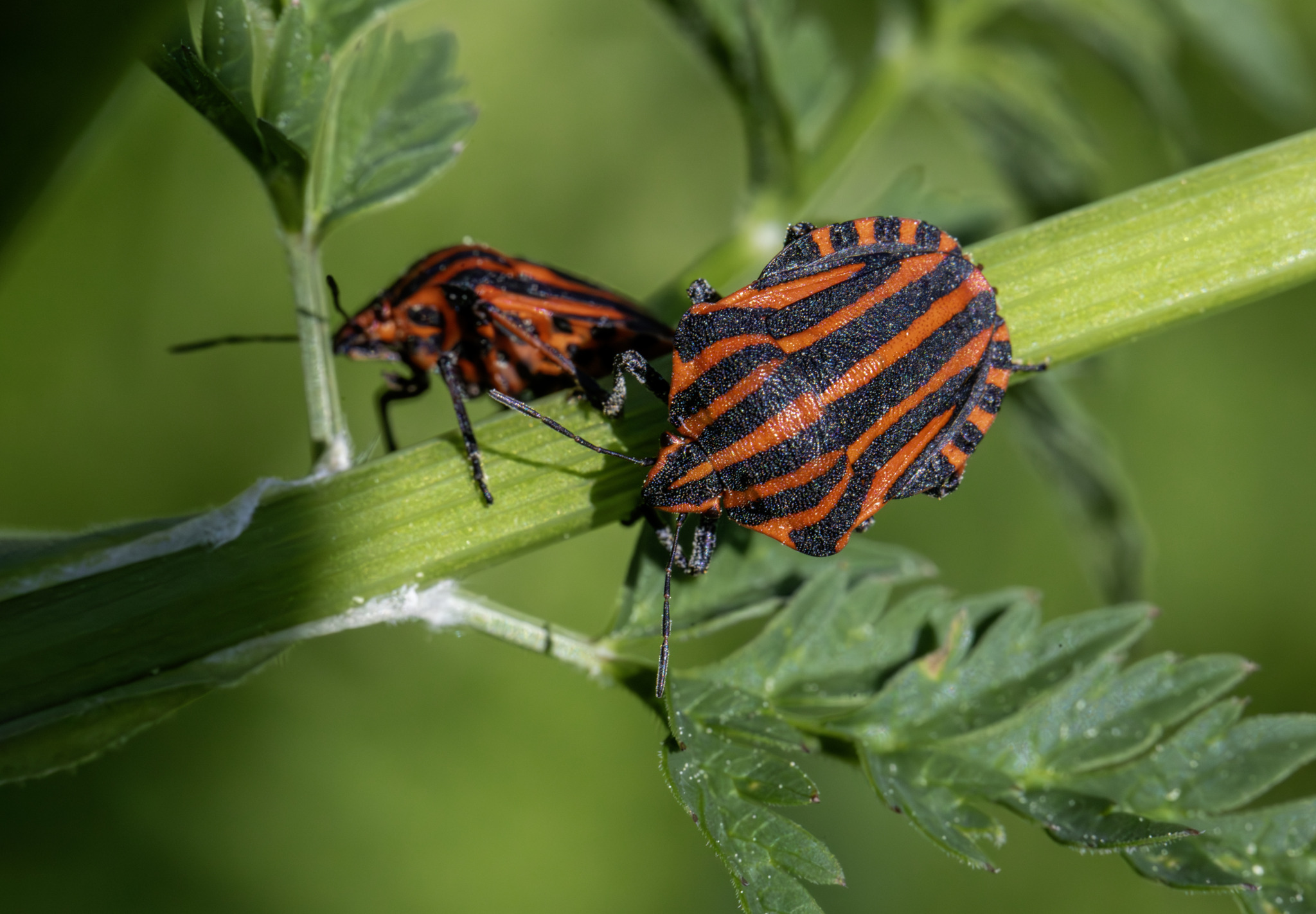The Italian Striped-Bug, known scientifically as Graphosoma lineatum, is a species of shield bug belonging to the family Pentatomidae. Here are some key characteristics and information about this insect:
- Appearance: The Italian Striped-Bug is easily recognizable by its distinctive black and red coloration. Its body is elongated and shield-shaped, typical of shield bugs. It has alternating black and red stripes running lengthwise along its body, giving it its common name. The color pattern serves as a warning to predators, indicating that the bug may be unpalatable or toxic.
- Distribution: This species is found primarily in southern Europe, including Italy, Spain, France, Greece, and parts of North Africa. It inhabits a variety of habitats, including grasslands, meadows, agricultural fields, and gardens.
- Habitat: Italian Striped-Bugs are commonly found in open areas with ample vegetation, particularly those with flowering plants. They may also be found in agricultural landscapes, where they can feed on crops such as legumes and various types of grasses.
- Diet: These bugs are herbivorous and feed primarily on the sap of plants, using their piercing-sucking mouthparts to pierce plant tissues and extract nutrients. They are known to feed on a variety of host plants, including members of the Asteraceae family, such as daisies and sunflowers, as well as legumes and grasses.
- Behavior: Italian Striped-Bugs are active during the warmer months of the year, typically from spring to early autumn. They are not particularly mobile insects and tend to remain in the vicinity of their host plants. When disturbed, they may emit a foul-smelling liquid as a defense mechanism, which can deter predators.
- Reproduction: Breeding habits of Italian Striped-Bugs typically involve males attracting females through various courtship behaviors. After mating, females lay clusters of eggs on plant stems or leaves. The eggs hatch into nymphs, which undergo several molts before reaching maturity.
- Ecological Role: Italian Striped-Bugs play a role in ecosystem dynamics as herbivores, contributing to nutrient cycling and plant diversity. They may also serve as prey for various predators, including birds, reptiles, and other insects.
- Human Interaction: While Italian Striped-Bugs are generally harmless to humans and are not considered agricultural pests in significant numbers, they may occasionally cause minor damage to crops in high densities. However, they are also important contributors to ecosystem health and biodiversity.
Overall, the Italian Striped-Bug is a visually striking insect species with interesting behaviors and ecological roles within its native habitats. Despite its conspicuous appearance, it remains a relatively understudied species in terms of its biology and ecology.
Views: 20
Subscribe to the newsletter:
